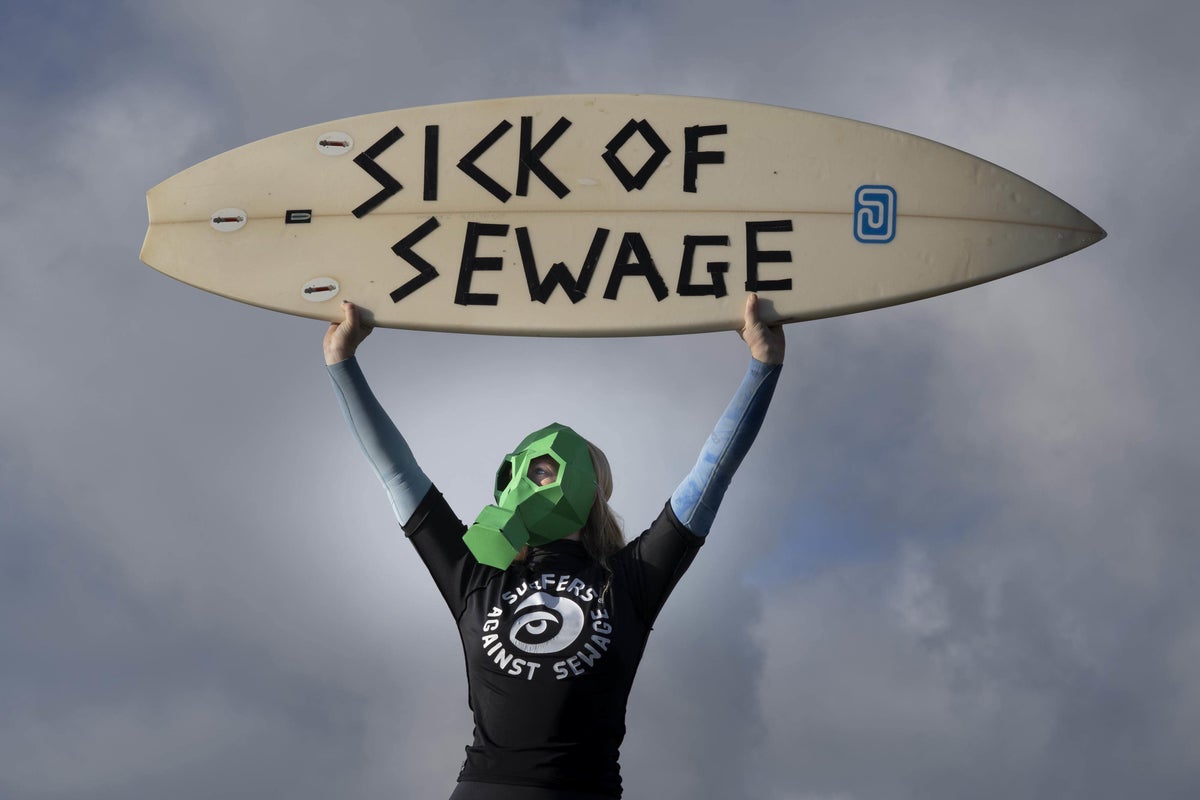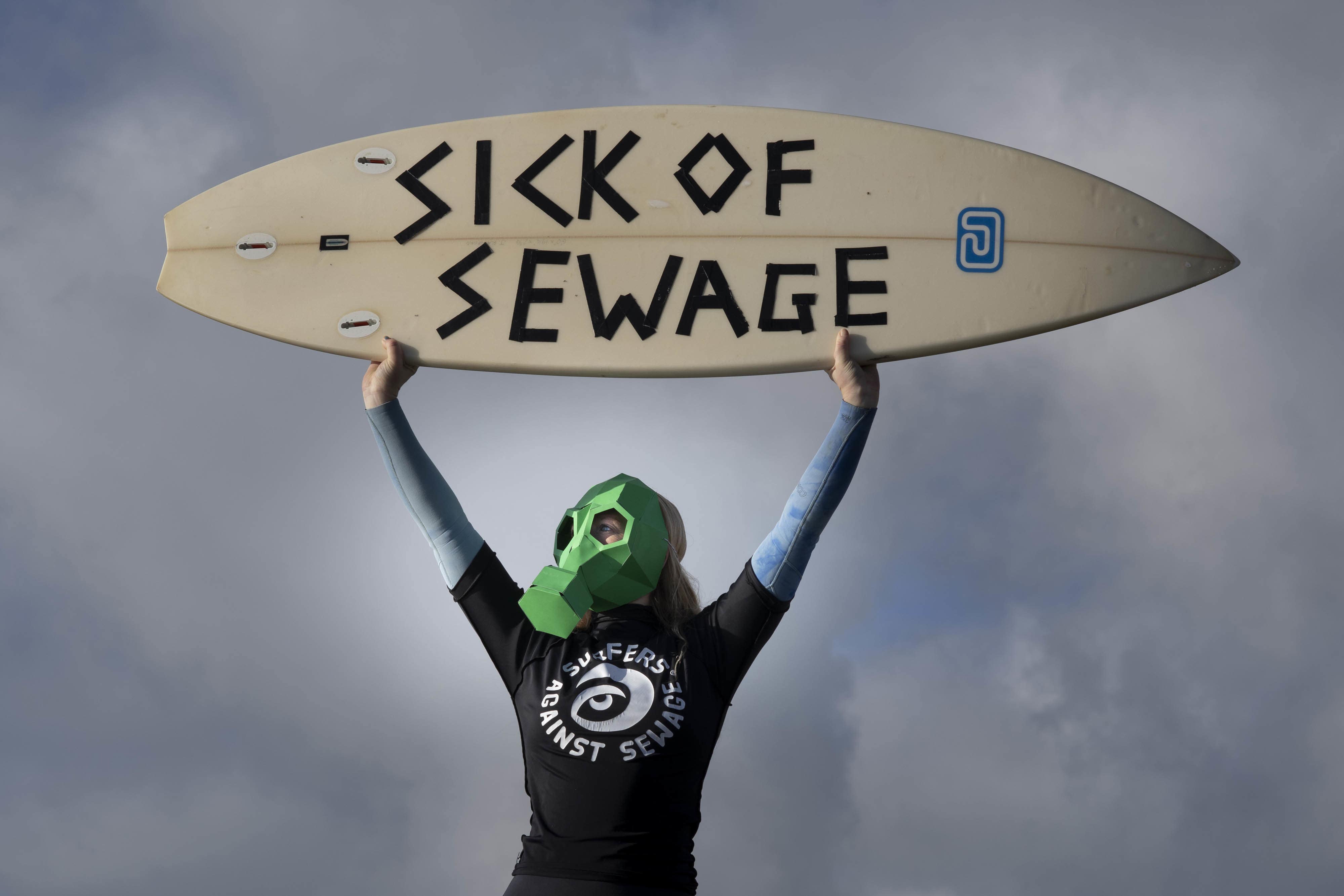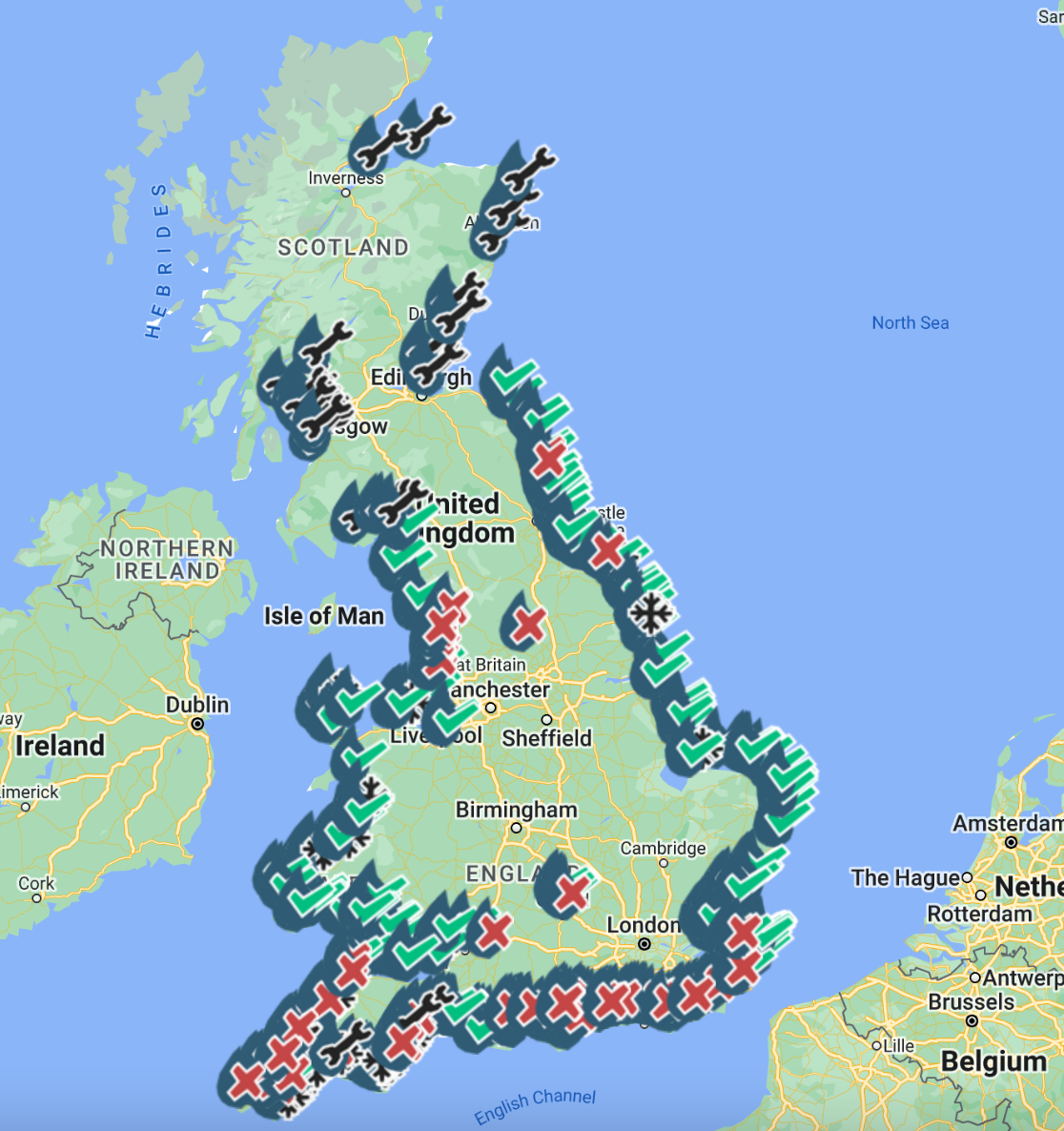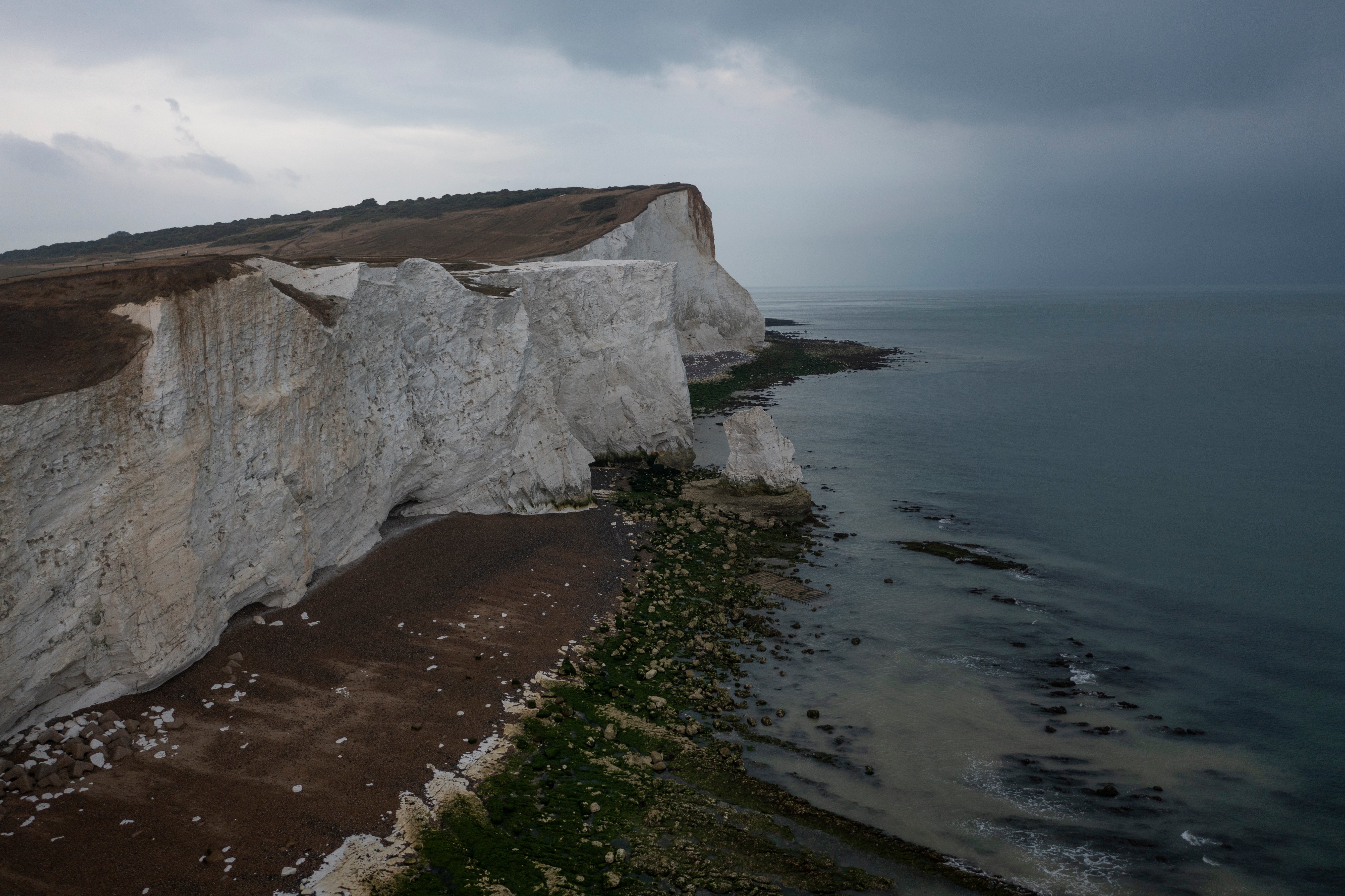
More than 320 pollution alerts have been issued for UK beaches already this year, new data reveals.
Heavy rainfall in the first week of 2023 has seen raw sewage overflows inundate vast stretches of the UK coast, affecting the water quality on beaches from Blackpool and Southport, to Bexhill and St Helens.
On Wednesday alone, more than 65 areas along Britain’s coastline saw the sewage pumped out into their waters trigger water quality alerts, according to a live map.

Figures collated by environmental charity Surfers Against Sewage (SAS), seen by The Independent, show that since 1 January this year, there have been 328 water pollution alerts along the British coast.
SAS logs real-time combined sewage overflows (CSOs) and pollution risk forecasts (PRFs), with an interactive map monitoring the water quality at more than 400 locations around UK rivers and coastlines.
On Wednesday, the map showed 41 locations across the UK were currently “in spill”, with live sewage pollution incidents. A further 26 are also still showing as red alerts because a spill occurred in the last 48 hours.
SAS criticised the “blatant disregard” for the health of the public and Britain’s beaches.

A spokesperson said: “Sadly it’s new year, same old s**t, with a huge number of sewage pollution dumps across the UK this week. Water companies’ decades of under-investment have left our beaches and blue spaces dirty and on the precipice of ecosystem collapse.
“The blatant disregard for public health and the health of our blue spaces is truly appalling.
“In this crucial decade for the ocean, this environmental vandalism must cease. We need a thriving ocean for thriving people, and that means an end of days for these profiteering water companies.”
In the northwest today, Blackpool beach and other bathing spots nearby, from Morecambe down to Southport, are bearing the brunt of a sewage overflow incident.
According to SAS, a “sewer overflow discharges straight onto the beach around the centre of this beach”.

In the southwest, there is a red alert for water pollution in place for Porthleven Sands in Cornwall, among many others.
“There are three sewer overflows in the area, one discharges into the harbour, one to the east of the harbour mouth over the rocks into the sea, and another at the western end of Porthleven West,” SAS said.
Pollution alerts also engulf much of the southeastern coastline today, including Camber Sands, Bexhill, and St Leonards.
In Camber, “storm sewage has been discharged from a sewer overflow in this location within the past 48 hours,” the SAS explains. It said the area was affected by a sewage overflow “close to a small stream,” which it warned could impact bathing water quality on the beach.
The east coast appeared relatively unaffected by sewage spills on Wednesday, however, bar a few exceptions, such as two overflows at Runswick Bay on the Yorkshire coast.
Some 14,500 storm overflows are in operation across England alone to keep sewers from becoming overwhelmed.
But as our weather turns ever more extreme as a result of the climate crisis, Britain’s Victorian-era sewers are being pushed to capacity more frequently, meaning sewage is increasingly being pumped out into its waters.
A Storm Overflows Discharge Reduction Plan was published in August which gives water companies until 2050 to improve the country’s mass-scale sewage spills.
But the Department for Environment, Food and Rural Affairs (DEFRA) has faced vehement criticism for its delayed action plan to manage the overflows compromising the UK water quality.
DEFRA has been approached by The Independent for comment.







